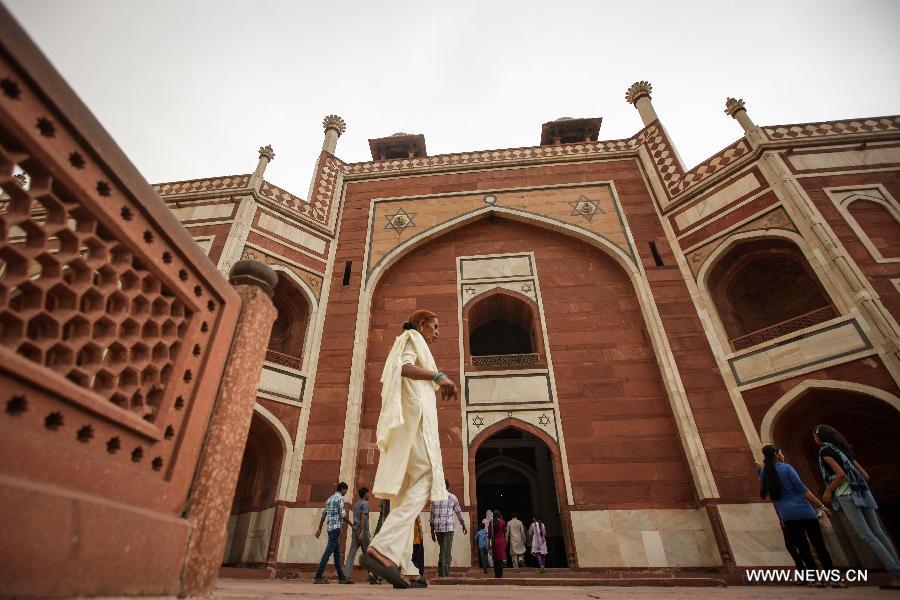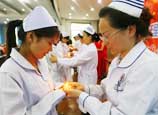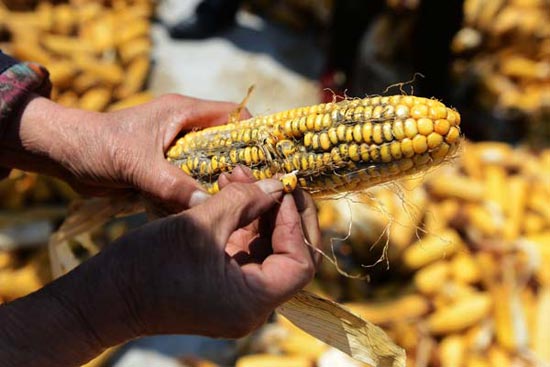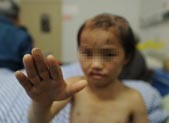
Poverty reduction in rural areas enters a new stage. To constantly improve the living conditions of the impoverished population in rural areas, the Chinese government promulgated the Outline of Development-oriented Poverty Reduction for China's Rural Areas (2011-2020) in 2011, setting forth the general objective of providing adequate food and clothing for poverty-stricken people while ensuring their access to compulsory education, basic medical services and housing by 2020. The state raised the national poverty line substantially to 2,300 yuan per person per year on average (calculated at 2010 constant prices), and by this criterion more low-income people have been included in poverty-reduction programs. In 2011 a total of 122 million people were covered by poverty-reduction programs all over the country, making up 12.7 percent of the rural population. In 2012 the central government spent 299.6 billion yuan on comprehensive poverty-reduction programs, an increase of 31.9 percent over the previous year, of which 33.2 billion yuan was special funds for poverty reduction. The state has launched regional development and poverty-reduction projects in 11 regions, including the Wuling, Liupan and Luoxiao mountainous areas, as well as plans to support the economic and social development of Tibet, Xinjiang, Xinjiang Production and Construction Corps, and the Tibetan-inhabited areas in the provinces of Sichuan, Yunnan, Gansu and Qinghai during the 12th Five-year Plan period (2011-2015). These efforts were aimed at alleviating deep-rooted poverty in these areas. In 2011 the average per-capita annual income for farmers in the counties which are key targets of the government's poverty-reduction work reached 3,985 yuan, an increase of 40.2 percent over 2009, a higher growth rate than that of the average level in China's rural areas. By the end of 2012 the size of the impoverished population in rural China had decreased to 98.99 million according to the new criterion, 23.39 million fewer than that at the end of the previous year. The state formulated the 12th Five-Year Plan for Village-based Development-oriented Poverty Reduction, planning to lift 30,000 impoverished villages in central and western China out of poverty, or 6,000 villages per year, in the five years from 2011 to 2015. At the same time, the living conditions of impoverished disabled people in rural areas have been further improved. In 2012 the State Council issued the Outline of Development-oriented Poverty Reduction for Disabled People in Rural Areas (2011-2020). In the same year the state rendered support to 2.299 million disabled people in poverty in rural China, provided training for 861,000 disabled people in practical skills and helped 132,000 poor families with one or more disabled members to renovate their houses.
People's living standards in poverty-stricken ethnic-minority areas are continuously improving. Based on the actual conditions in ethnic-minority areas, the Chinese government, adhering to the principle of combining assistance from the central government, support from developed regions and self-reliance of the ethnic-minority areas, has formulated a series of preferential policies to promote the ethnic-minority areas' economic growth and improve the living conditions of all ethnic groups. The central government has been continuously increasing transfer payments to ethnic-minority areas. From 2010 to 2012 the total amount of transfer payments to eight ethnic-minority provinces (autonomous regions) reached 2.6055 trillion yuan, up from 24.3 percent to 25.7 percent of the total transfer payments from the central government to local governments. Meanwhile, transfer payments to ethnic-minority autonomous prefectures, counties and border areas have also been increased. The state formulated and promulgated the Plan for Supporting the Development of Ethnic Minority Groups with Fewer Populations (2011-2015), including six ethnic minority groups with populations ranging from 100,000 to 300,000 each in the recipients of assistance, and earmarked special funds to help them develop their economy and improve their production and living conditions. The state also rendered support to the economic and social development of border areas by formulating the Action Plan to Bring Prosperity to Border Areas and the People There (2011-2015). The state adopted policies to increase income for the herdsmen and promote the development of pastoral regions. Marked achievements have been scored in helping ethnic-minority areas and their people get rid of poverty and become relatively well-off. From 2005 to 2010 the number of impoverished people in the eight aforesaid provinces (autonomous regions) decreased from 23.384 million to 13.044 million, and the impoverishment rate dropped from 16.5 percent to 7 percent, nearly 5.5 percentage points faster than the national average impoverishment rate in the same period.
【11】 【12】 【13】 【14】 【15】 【16】 【17】 【18】 【19】 【20】
【21】 【22】


















 Father arrested for 'torturing' teen daughter
Father arrested for 'torturing' teen daughter


![]()
